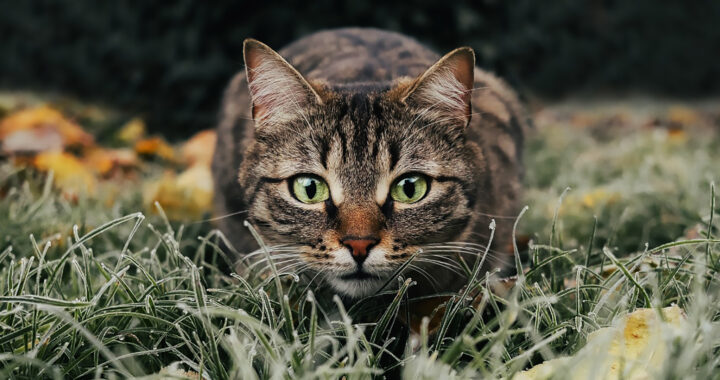Physical fitness is not just about strength. There are several dimensions to it. Nevertheless, when it comes to cats, these fur babies are one of the physically fittest species in the animal kingdom. The science behind the physical fitness of cats even suggests that they are the epitome of perfect and well-rounded athletes. Furthermore, compared to most modern humans, who often require high levels of targeted fitness training to attain all dimensions of fitness, they are fitter relative to their size.
Understanding the Science Behind the Physical Fitness of Cats
It is worth noting that physical fitness is the ability to showcase a set of physical skills that enable an individual or in this case, an animal, to perform specific tasks effectively and efficiently. Cats exemplify this definition. They are not only cute. Their bodies are a marvel of natural engineering. Even the chunkier ones are relatively fitter.
There are five standard dimensions of physical fitness. These are physical strength, cardiovascular endurance, balance, flexibility, and coordination or agility. Cats check all boxes. Their physique is a product of evolutionary biology. Remember that these animals are natural hunters. The domestic cat is a member of the greater Felidae family.
Most researchers now believe that the earliest cats were first domesticated by Neolithic farmers in the prehistoric Fertile Crescent about 7500 and 7200 BCE to hunt and repel rodents. However, despite their domestication, modern domestic cats have retained the physical characteristics that have made them formidable hunters.
1. Physical Strength
The ability to lift, push, or pull is called physical strength or power. Muscular capacity and body composition determine this dimension of physical fitness. It is also one of the defining physical characteristics of cats. Their hind legs allow them to jump up to six times their body length in a single leap while their forelegs and upper body enable them to climb vertical surfaces. Cats also have a bite force of around 70 pounds per square inch. Their shoulder muscles and retractable claws allow them to pin down and hold their prey.
But why are cats strong? One reason lies in the fact that they are naturally predisposed to developing a lean body structure. Their muscular build is also highly concentrated around their core and limbs to provide a blend of strength and agility optimized for short bursts of intense activity. A lightweight skeleton provides structural support without sacrificing power. Cats also have a high proportion of fast-twitch muscle fibers that give them explosive power for leaping, sprinting, pouncing, and climbing with incredible force.
2. Balance and Coordination
Cats also possess excellent balance and coordination or agility. This comes from a combination of anatomical adaptations and neurological prowess. Take note that balance is defined as the ability to maintain the line of gravity of a body within the base of support with minimal to zero posture sway. Cats have good static and dynamic balance. Coordination or agility is defined as the ability to combine and control multiple movements of different body parts or muscle groups at once or in sequence with effectiveness and efficiency or precision.
The highly developed vestibular system of cats gives them spatial orientation or proprioception to maintain balance. Their tails help in giving them a sense of balance while their retractable claws provide them with stability on a surface. A flexible spine allows them to go through tight spaces and maneuver their bodies mid-air. Their coordination is also a product of their muscular features and neurological adaptations. Their rapid reflexes, sensory integration, and motor control allow them to coordinate various muscles all at once or in sequence.
3. Flexibility
Another trait that attests to the physical fitness of cats is their flexibility. Take note that flexibility is determined by the capacity to perform bodily movements in a different range of motions or to move the joints within their respective full range of motion. It is also a prerequisite to excellent balance and agility. Cats can stretch their bodies to almost double their relaxed length when preparing to leap. They can fit through any space large enough for their heads. Cats can also rotate their spines up to 180 degrees to allow them to land on their feet.
The flexibility of cats lies in their unique adaptations in their skeletal and muscular systems. These animals have a highly flexible spine consisting of 30 vertebrae. This is more than most mammals. The discs between the vertebrae are exceptionally elastic. Cats also do not have a rigid clavicle or collarbone. This enables them to move their forelegs freely in a wide range of directions. They also have well-developed and elastic muscles and tendons. The equal distribution of muscles across their bodies gives them the ability to stretch and compress.
4. Cardiovascular Endurance
Endurance or cardiovascular endurance is the capacity of the circulatory and respiratory systems to effectively and efficiently transport blood and oxygen to the active muscles of the body. Cats are not built for marathon-style endurance. However, with their ability to switch from calm or rest to explosion, their specific cardiovascular system is optimized for anaerobic activity. This means that they are adept at sprinting and other short bursts of intense activities to complement their skills like physical strength, balance, and coordination or agility.
Cats have an elevated heart of about 140 to 220 beats per minute. This supports their readiness for activities that require sudden bursts of energy. Their heart and blood vessels are efficient at delivering oxygen to muscles during short and intense activities. They also have a relatively high red blood cell count and hemoglobin concentration to support both short bursts of activity and rapid recovery. These allow them to run up to 30 mph in short bursts, recover quickly, and repeat another round of short bursts without becoming overly fatigued.
